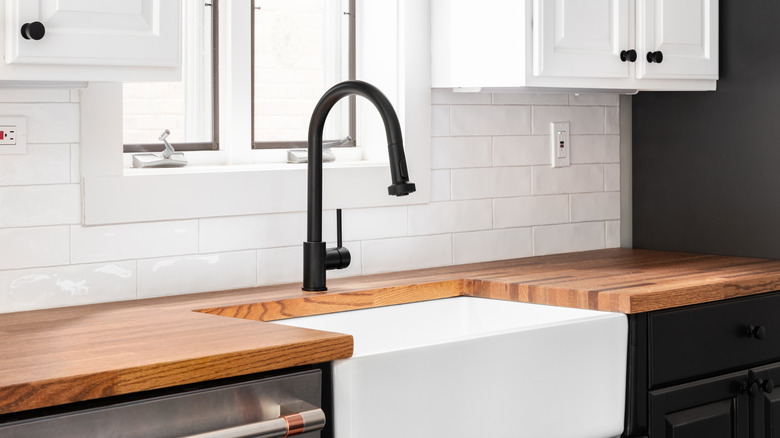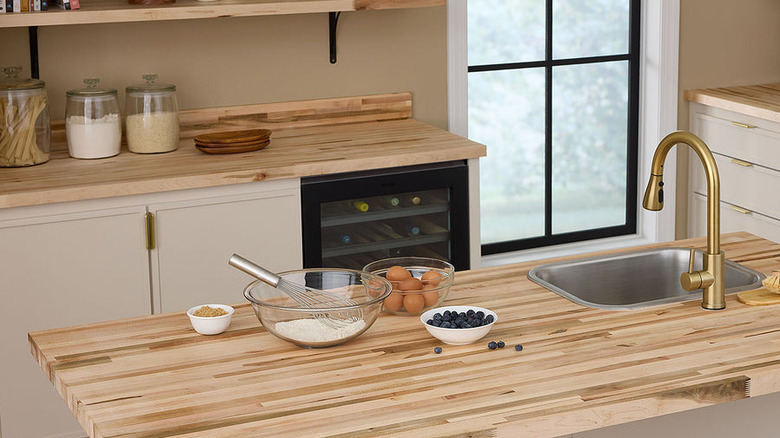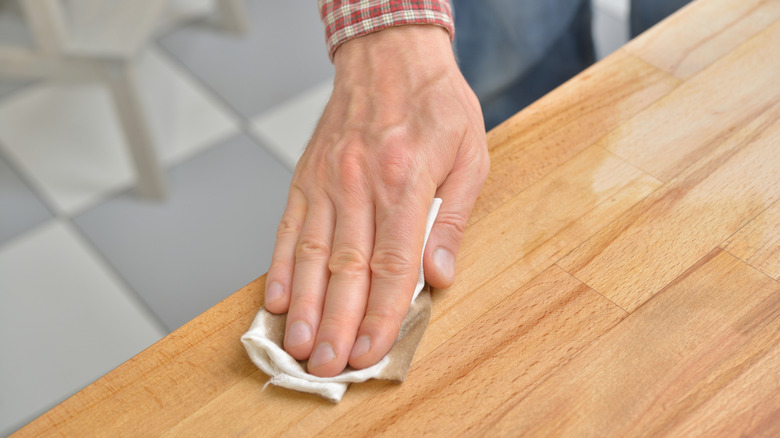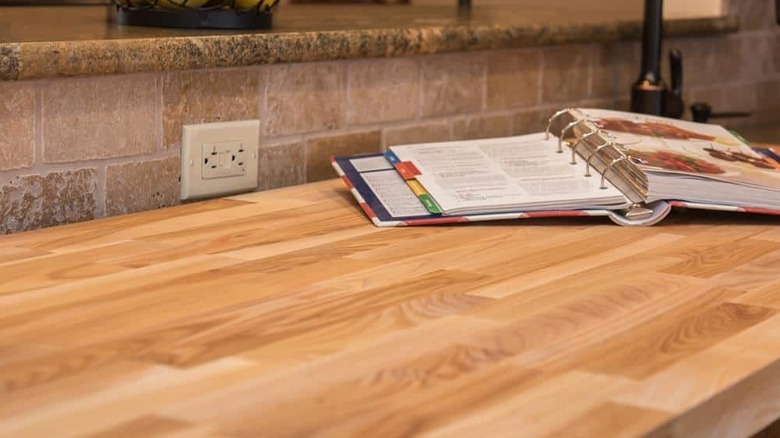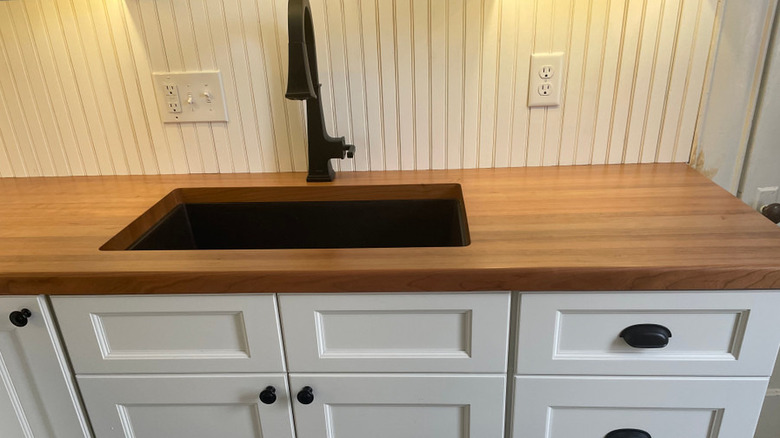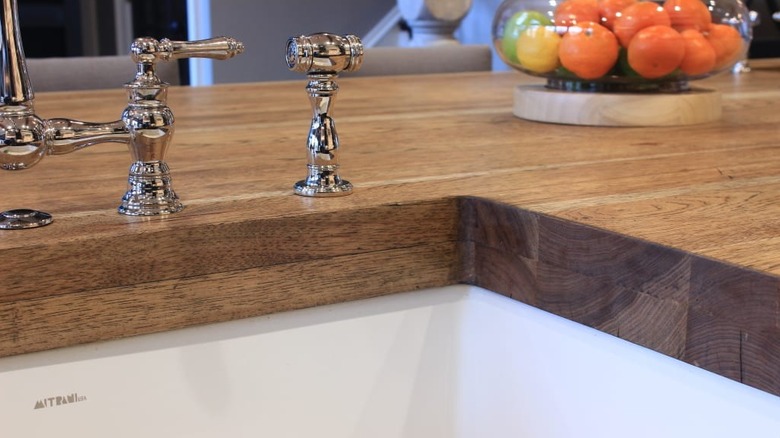10 Best Wood Types For DIY Butcher Block Countertop
We may receive a commission on purchases made from links.
If you're remodeling your kitchen and have decided to DIY butcher block countertops, you probably want to know a few things before you commit. For instance: how long do they last; what is the maintenance like; and what wood should you choose? That last question is really what will determine the answers to the first two. There are many wonderful woods to choose from for a butcher block countertop like maple, birch, oak, hickory, etc. — and each one has its own unique benefits and flaws.
Butcher block countertops are different from regular wood countertops because you can work directly on their surface. They are constructed of blocks of wood glued together — which creates an extremely durable countertop. And the great thing is that when you make the countertops yourself, you can use any leftover wood for even more clever DIYs.
The wood you choose to build your butcher block from is really all about your lifestyle and what look you're trying to achieve. If you want a more minimal look, you could choose a birch or beech. But if you want something that looks a little richer, teak or cherry could be the answer. If you do a lot of your own cooking, you will want a harder wood like maple.
Acacia
Acacia is a good all-around choice for butcher block countertops because not only is it durable and resistant to scratching, but it is also beautiful. Another really great feature of acacia wood is that it is a sustainable material. Acacia trees grow rather quickly which makes them a wonderfully eco-friendly material. This type of wood is also resistant to water damage, mold, and mildew, which makes it perfect for use in the kitchen, especially around a sink.
Maple
Maple is a versatile type of wood and a great choice for butcher block. It's a harder wood, which makes it more durable and resistant to dents and scratches. It also has a tighter grain than other wood, which makes it great for food prep areas. This tight grain will ensure your countertop stays sanitary and you won't have to worry about the wood holding onto bacteria and germs. A quick wash with soap and water after cooking, and your countertop is clean.
Beechwood
The two most common types of beech trees are American and European, and both work well for butcher block countertops. This light-colored wood is similar to maple in strength and durability. Beechwood has a straight, fine grain, which gives it a lovely consistent look. This fine grain also makes it strong enough to resist dents and scratches, but also gentle enough not to damage knife edges. You will often find beechwood used in kitchens with a minimalist or Scandinavian aesthetic.
Oak
There are two main types of oak used for countertops — red oak and white oak. Oak is a hardwood, so both are extremely durable options, however, white oak has more moisture resistance. Oak is the perfect choice for kitchens that see a lot of action. If you have kids, a busy lifestyle, or have something akin to "Top Chef" happening nightly in your kitchen, oak should be your go-to. Not only will it stand the test of time, but it also looks good doing it.
Birch
Birch is very similar to beech with its color, grain tightness, and hardness. Where they differ is that birch is generally considered a more attractive wood because it can vary in color shades to more warm tones, and there is more noticeable whirling in the grain. If you've been to IKEA, you've seen birch wood, which is rather popular in Scandinavian furnishings. Birch is also a very eco-friendly option for your countertops because it is sustainably sourced and easy to find. It's an all-around great choice.
Walnut
Walnut is the perfect wood for those who like a little drama in their design. Its deep, rich color can be a perfect contrast to break up a white kitchen. It is a little pricier than other wood types on our list, but you are getting some serious beauty as well as a wood that is gentler on knives. While not as hard as maple, walnut can stand some rough use. However, because of its dark color, scratches can be more visible. Thankfully, walnut is water-resistant, naturally anti-bacterial, and easy to maintain if properly sealed.
Ash
Ash is the perfect balance of beauty and function. It is strong and durable enough to handle daily use without losing its appeal. Its grain pattern is where this wood really shines — with beautiful whirls and straight lines for visual interest. It comes in shades ranging from almost white, yellow, and even light brown. It is a sustainable choice for those in the U.S. and Canada, as it is locally-sourced. This wood is a great compromise when you're trying to decide between looks and durability.
Teak
Teak is an exotic wood for a gorgeous butcher block with a very distinctive look. It is one of the more popular woods that chefs swear by for butcher blocks. What makes teak so unique is that it has a naturally high concentration of oils, making it uniquely water-resistant, extremely anti-bacterial, and very durable. This is the trifecta of butcher block woods. The only downside is that teak is typically more expensive than other wood types.
Cherry
Cherry is most known for its warm tones and beautiful grain. It is not as hard as some of the woods on our list, but this is good for your knife edges if you plan to chop directly on your butcher block's surface. It is still rather durable, especially if you select American cherry wood. Cherry is another great choice if you need something that looks good and will also stand up to your family's kitchen habits.
Hickory
Hickory is the hardest wood on our list — meaning if you have a very active family or like to practice your chopping skills on a daily basis, this is the wood for you (although it will do a number on your knives). It's a lovely medium-toned wood with a varying grain pattern, which means it can work with many different decor styles. It's a great no-fuss choice for homes with a lot of kitchen activity.
